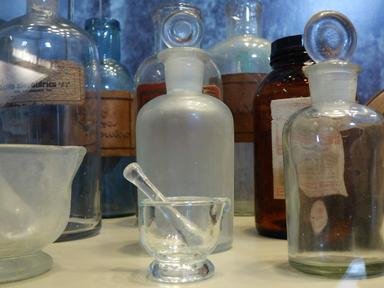Quiz Answer Key and Fun Facts
1. What's in that box with yellow powder?
2. Look here, this box contains a grey shiny liquid. What could that be?
3. This pack is filled with some black solid. What could that be?
4. Caution! This package may seem empty, but it has a warning sign that the contents are highly explosive. What could this colourless gas be?
5. This pack contains a colourless to pale blue gas. I opened it briefly and smelled electricity. What could that be?
6. Here is a pack with a grey shiny solid. It is remarkably light. What is contained in it?
7. Another pack with a grey solid is over here. Pff, that's heavy. What's inside?
8. Don't open this pack, I don't like the appearance of that yellow-green gas. What is this gas, by the way?
9. Another pack contains a bright yellow solid, quite heavy. What would be inside?
10. This pack contains a reddish solid, rather light. What is inside?
Source: Author
JanIQ
This quiz was reviewed by FunTrivia editor
rossian before going online.
Any errors found in FunTrivia content are routinely corrected through our feedback system.

